How Much Sun Do Herb Gardens Need?
![]() Growing herbs year-round is possible with indoor or outdoor herb gardens as long as you do a little research to make sure you are maximizing your available sunlight no matter where you live in the world.
Growing herbs year-round is possible with indoor or outdoor herb gardens as long as you do a little research to make sure you are maximizing your available sunlight no matter where you live in the world. 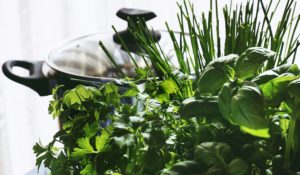
During the winter months, if your herbs receive a lot of bright, filtered light or morning sun, and then shade in the afternoon, they will still thrive. Herb gardens grown under total sunny exposure all day tend to become leggy.
Herbs that enjoy total sun exposures in the summer will often languish when given too much shade in colder weather months.
In general, most need at least six hours of direct sunlight per day for at least part of the day during the growing season. There are exceptions to this rule because some herbs do better with less direct sunshine, but this is true for most plants that people grow as a garden or within a planter box on their deck, patio, or porch. Remember also that different sun conditions affect how much light an area receives.
To help your herb garden grow to the best of its ability, it is not just what part of the world you live in that makes a difference in how much sun your garden or planter will get, but also where your garden or planter is located within that location.
For example, people who live in a valley might find that their back deck or yard gets a lot less direct sunlight than someone else’s house on the other side of the hill.
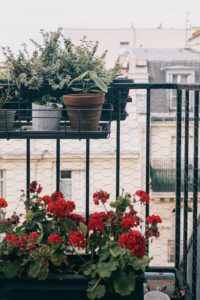 Once you have placed your herb garden or balcony pots in their new space to achieve the best exposure for them, they need to be rotated regularly so they don’t lean towards a specific direction from constantly getting more light exposure from one side.
Once you have placed your herb garden or balcony pots in their new space to achieve the best exposure for them, they need to be rotated regularly so they don’t lean towards a specific direction from constantly getting more light exposure from one side.
Herb gardens should ideally have something to block the wind because solid winds can dry out tender plants quickly and even tear them right out of the ground. Herb gardens also need to be protected from animals that might dig in them or eat their tender young sprouts.
During the winter, even six hours of sun exposure will be reduced to five or four hours on some days because light levels are lower this time of year, depending on where you live.
For example, if you get three hours of direct morning sunlight and then one hour each late afternoon and early evening, it will still give your garden more than enough light for most varieties of herbs (although some types like borage do better with less light).
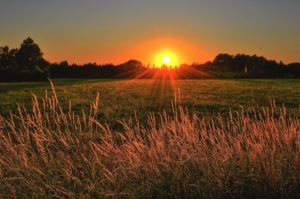 If you live in a scorching southern climate, your herbal plants may not survive more than two hours in the direct sunlight during the summer months, whereas in cooler northern weather, you might get five hours plus of direct sun during the day.
If you live in a scorching southern climate, your herbal plants may not survive more than two hours in the direct sunlight during the summer months, whereas in cooler northern weather, you might get five hours plus of direct sun during the day.
Herb gardens need shade from the extreme afternoon sun in hotter climates, or they may dry out and wilt, or even fry to a crisp!
Ideally, an excellent southern exposure is a perfect option for herb gardens because it does not suffer from the extreme cold but still gets enough light (and heat) throughout the year and herb plants like it when they don’t get too much wind blowing through them. Herb plants can become leggy when trying to reach for that all-important sunlight by stretching towards the window with their stems.
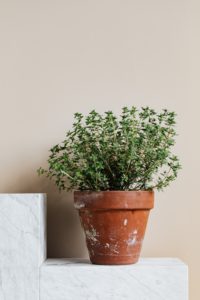 It’s best to rotate your herbal plants on both an east-west axis (move each one forward or back) and a north-south axis (turning the one that faces south, towards the window to face north instead, etc.)
It’s best to rotate your herbal plants on both an east-west axis (move each one forward or back) and a north-south axis (turning the one that faces south, towards the window to face north instead, etc.)
Some plants will need less sun exposure than others, whether you’re growing an indoor herb garden on a windowsill or a large outdoor Herb Garden next to your patio door.
Herbs with thicker leaves don’t have as much light requirement as those with thinner leaves. Also, some herbs grow better when they are not getting as much direct sunshine, so don’t be afraid to rotate them around, as mentioned earlier.
If you live in a sweltering climate, it is best to try and put your plants where there is more shade or protection from harsh wind gusts during the day. This can be done by growing your Herb Garden against an east or west wall, so the plants are out of the direct sun.
 Herb Gardening is a great way to have fresh herbs on hand for cooking, making teas, and aromatherapy products. This can be especially nice when you live in a climate where you might receive only five hours (or less) of direct sunlight during certain parts of the year. There is no need to worry about winterizing and covering your plants inside – leave them outside, so they get the best possible light exposure all year long! It can be fun to have Herb Gardens in several different kinds of containers around your home, porch, or deck.
Herb Gardening is a great way to have fresh herbs on hand for cooking, making teas, and aromatherapy products. This can be especially nice when you live in a climate where you might receive only five hours (or less) of direct sunlight during certain parts of the year. There is no need to worry about winterizing and covering your plants inside – leave them outside, so they get the best possible light exposure all year long! It can be fun to have Herb Gardens in several different kinds of containers around your home, porch, or deck.
![]() So, how much sun does one need to have a flourishing herb garden? This is an important question for many people interested in growing plants, especially herbs.
So, how much sun does one need to have a flourishing herb garden? This is an important question for many people interested in growing plants, especially herbs.
 There are so many different plants that each have their own specific needs. Here are some tips to help you find how much sun your herbs will need.
There are so many different plants that each have their own specific needs. Here are some tips to help you find how much sun your herbs will need.
For sunny areas with at least six hours of direct sunlight:
- Basil grows best when it has total sun exposure during the day.
- Chives can do well with four hours or more of direct sunshine per day
- Dill likes to receive five hours of full shade per day
- Fennel needs six hours of direct sunlight per day during the summer.
- Parsley can adapt to how much sun it receives but thrives in at least five hours of sunlight per day.
- Rosemary is a perennial herb that does well in either partial shade or full sun during the warmer months when they are actively growing. This means about six hours of sun a day.
If you have less than six hours of sunshine a day:
- Chervil will tolerate some shade, but it grows best in four hours or more of full sunlight daily
- Mint prefers three to four hours of indirect light each day instead of being directly under the hot afternoon sun. They also add that mint is among the most invasive herbs, so be careful how much you plant.
Some good shade-tolerant herbs include:
- Sorrel can do well with just three hours of light per day
- Tarragon prefers to have two to fours hours of sunlight per day and can even go without any sun if need be. In general, they like morning sun or dappled afternoon sunshine.
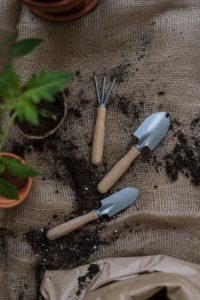 It’s also important to note how your herb garden reacts to how much shade it gets throughout different seasons. For example, chives do best in total sun exposure from April through September and should be placed in partial shade for the rest of the year.
It’s also important to note how your herb garden reacts to how much shade it gets throughout different seasons. For example, chives do best in total sun exposure from April through September and should be placed in partial shade for the rest of the year.
Dill can grow sufficiently with four hours or more of sun exposure per day, but they do best when the first two hours are in direct sunlight, and it doesn’t matter how much is received after that point.
In conclusion, Herb Gardening is a great way to have fresh herbs on hand for cooking, making teas, and aromatherapy products. This can be especially nice when you live in a climate where you might receive only five hours (or less) of direct sunlight during certain parts of the year.
Being able to have herbs grow year-round is a great sense of accomplishment and it is possible to grow herbs no matter where you live as long as you have the chance to maximize the available sunlight. In fact, finding the perfect amount of sunlight and rotating your plants in and out of that sunlight is key to maximizing the growth potential of your herb garden whether indoor or outdoor.
